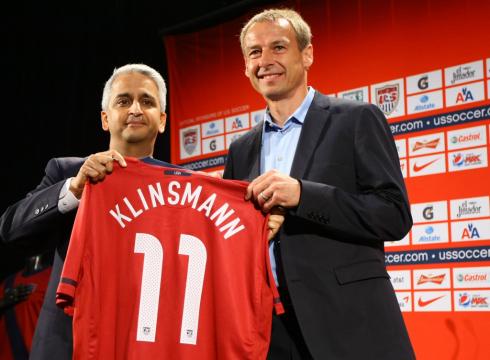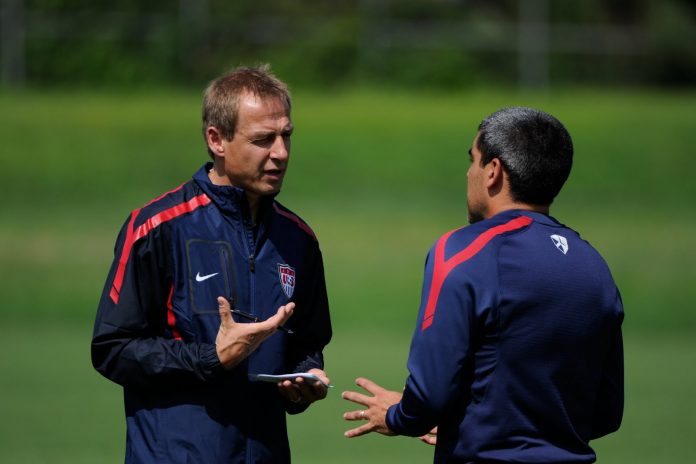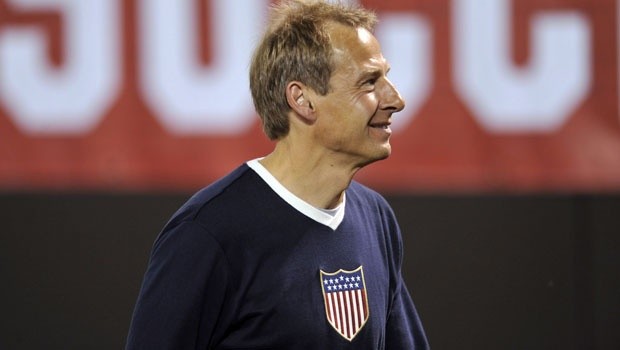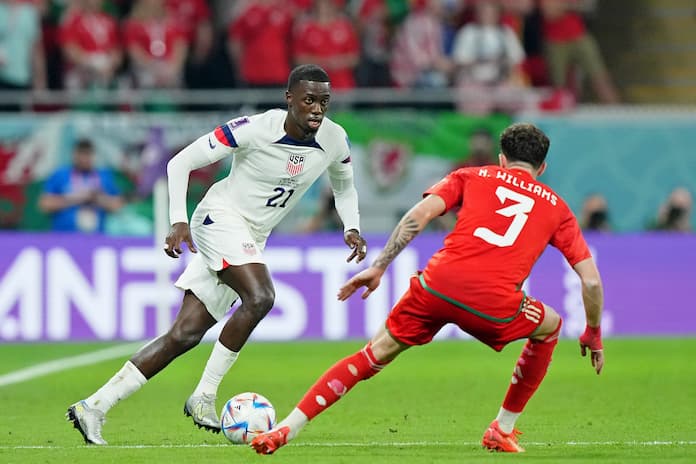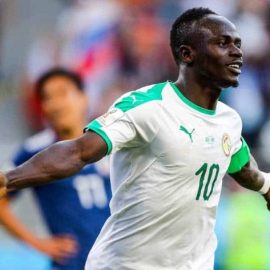Jurgen Klinsmann worked for ESPN as a pundit during the 2010 World Cup, and Klinsmann’s charisma and easy nature made him a natural in front of the camera. When he talked about the tournament, especially Germany, he was good.
But there was something in his manner when dissecting the United States that made you feel like he had some stake – not in the team – but US Soccer’s situation.
In the wake of the American’s heartbreaking loss to Ghana, Klinsmann rattled on about how the US’ youth program needed to be revamped, and how players needed to make huge leaps technically. He said, “You can’t rely on Michael Bradley to do everything.”
He had an air of assertiveness and knowledge that you wouldn’t expect your average analyst to have.
As it were, Klinsmann knew the USA job was his whenever he wanted it. Since he made his name in 2006, Sunil Gulati and US Soccer courted the California-based World Cup winner. They tried to hire him in 2006, and would begin negotiating with him to take over for Bob Bradley in 2010 in the days after that Ghana game.
Both times, Klinsmann balked when the USSF wouldn’t meet his demands over organizational control and structure, the most important facet of Klinsmann’s long-term game-plan to make the USA World Cup contenders.
When Klinsmann finally took over in 2011 after a Gold Cup demolition at the hands of an irresistible Mexico left the USA decidedly second-best in CONCACAF and trending downwards, he talked about changing the way the US played the game of soccer.
Initially, his goals were too lofty. In 2011, the US faltered under the weight of change and Klinsmann’s own learning curve. But Klinsmann wasn’t signed to keep the status quo going. 2013 was the USA’s best year ever.
Klinsmann was the one who wanted a contract extension, a commitment from US Soccer to his vision and success, beyond the real uncertainty of the upcoming World Cup in Brazil, and on to Russia in 2018.
It seems odd and needy – extending and promoting an employee just months before he is evaluated. But a close look shows that locking up Klinsmann until 2018 is a sound and obvious choice by US Soccer.
Klinsmann is a systems guy. He loves thinking about them, talking about them, building them, and monitoring them.
That’s why it makes sense that a requisite of Klinsmann’s recent contract extension was the addition of technical director role to his list of responsibilities with US Soccer.
Here’s the message: You don’t try to sign Jurgen Klinsmann three times over the span of five years to be a one-cycle manager. You signed Klinsmann to change the way you play the game.
Once upon a time, US Soccer had “Project 2010”, a program designed in 1998 to ensure that the United States would be a legitimate threat to win the 2010 World Cup that Klinsmann commentated on.
It’s not a bright spot for US Soccer, and that’s why we heard less and less about it over the years – Project 2010 failed.
The US have been a decent team with a chance to advance from the group stage of the World Cup since at least 1994. In the years 1998-2010, the USMNT made small advances across the board, but made no sweeping move towards the top of the soccer pyramid.
To some degree, that’s good. The years since the US hosted the World Cup have marked by massive growth in the game in America, but not in the standing of the senior national team itself.
Hiring Klinsmann was the reboot of Project 2010 – the acknowledgment that bigger, grander, more ambitious big picture changes are needed to make the USA World Cup contenders.
Klinsmann was so attractive for so long because of his top-to-bottom belief in changing entire systems, not tweaking teams.
It’s how he rebuilt Germany into a soccer elite. In just two of the most pressurized years in the countries footballing history before they hosted the 2010 World Cup, Klinsmann changed the way Germany played.
From the first youth levels to Michael Ballack and Miroslav Klose, Klinsmann insisted upon progressive training, testing of fitness levels and dietary advice, expansive, attacking football, and a new swagger for the old battle-tested Germans.
Klinsmann left the job after the World Cup, but the systems have thrived under his successor and former right hand Jogi Loew, and in Recife in June, Klinsmann faces his baby all grown up.
With Germany, Klinsmann turned a Mercedes into a Cadalliac. With the US, Klinsmann is trying to pull off the same feat with a Jeep.
It was always going to take time. In that sense, the Russian World Cup has been the focus from the beginning, and unless Klinsmann’s vision was clearly failing – it’s not – a pre-World Cup contract extension was always on the cards.
If the US get bounced from the World Cup in the group stage, Klinsmann can continue working without his job hanging over his head. If the US get out of the group and turn the heads of the world, Klinsmann is locked up.
Either way, he’s the coach after the World Cup. He’s earned it. His vision is already being implanted.
The US have never had a deeper talent pool. They’ve been able to win multiple ways, and been able to dominate teams like Mexico and Germany. They’ve never looked more confident.
Klinsmann isn’t exactly a run-of-the-mill coach. For Klinsmann to be as effective and game-changing as he can be for US Soccer, he needs another four years.
The lowest point of the German’s tenure – after Brian Straus’ article post-Honduras loss in March – was the bottoming out. The US took off from there.
So far, the Klinsmann tenure has gone as well as could be expected. This contract extension is the affirmation that things are going to plan. Whatever happens in Brazil, that doesn’t change. Jurgen Klinsmann is the man for the present, but the potential of Klinsmann is still the brightest light in US Soccer.
Add Sportslens to your Google News Feed!
